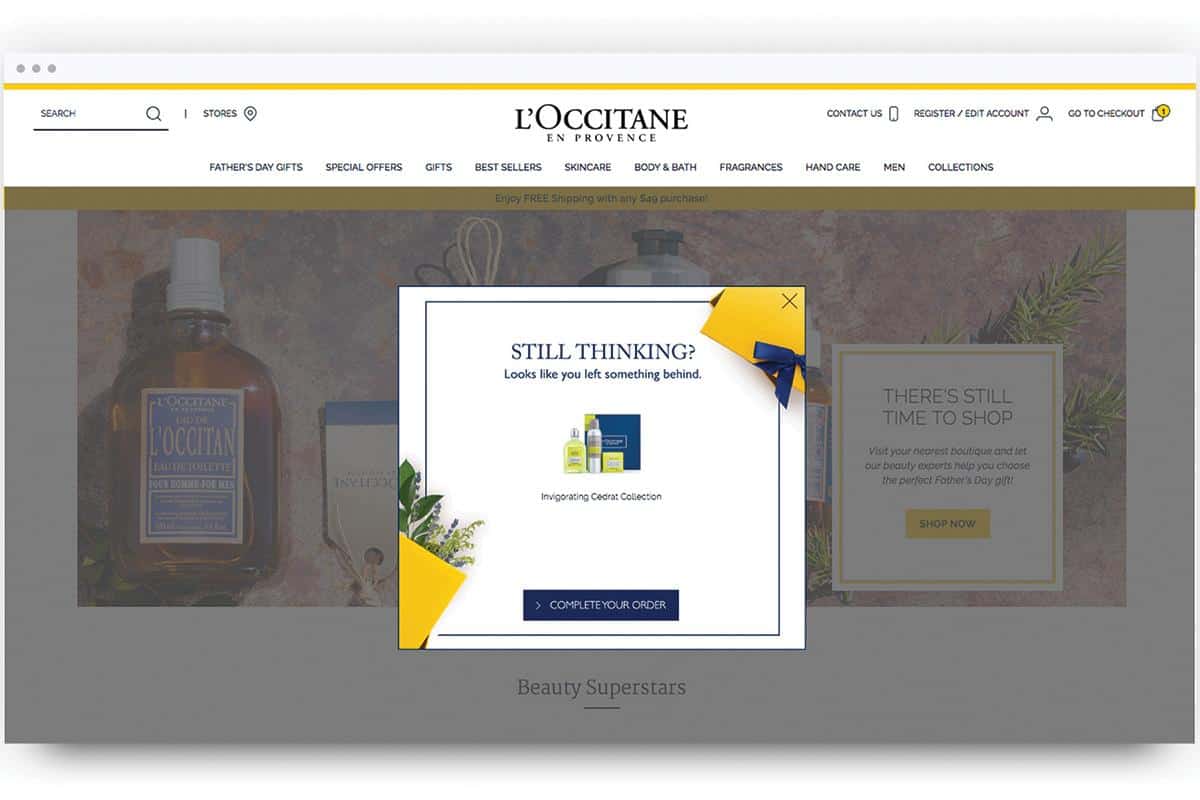Today’s shoppers are no longer limited to buying from their local high street or retail park. Instad, they have technology in their pockets that enables them to buy from the online stores that line the virtual floors and aisles of a global mall.
The challenge now for retailers and brands is about how to stand out from the competition on a ‘mall’ that is very often only accessed via the small screen of a smartphone. More shoppers are now buying online, and more online shoppers are buying via their mobile phones.
As far back as 2016, figures from etail trade association the IMRG suggested that more than half of all online sales took place via mobile devices and as recently as February 2018 its figures suggested they grew by 38.5% that month alone. Today merchandising platform Amplience suggests that 90% of ecommerce growth is now from mobile commerce.
The task for retailers is to put their goods in front of shoppers who are already keen to buy them, at the right time and in the right place. It’s about ensuring that their goods are relevant – and that they stand out.
“One of the biggest challenges in ecommerce is differentiation,” says James White, head of business development at personalisation specialist Nosto. “You can almost buy anything you want from anywhere, whether that’s from Amazon or another retailer online. The price is always very competitive. The biggest question is, why should these customers buy from me and not someone else?” He adds: “Personalisation, merchandising, relevancy of product is almost more important now than it was because there are so many product options and prices to choose from.”
According to research from application network provider MuleSoft, which interviewed 8,000 people around the world including 2,000 in the UK for its Consumer Connectivity Insights 2018 report, only 50% of respondents around the world believed that retailers provided them with a personalised experience. That fell to 45% in the UK. More than half (56%) said they would move between retailers if they had a disconnected experience across different channels. At the bottom line, almost a third (32%) said they spent more with a retailer that provided a personalised service than one that did not.
Using data to make it relevant
When retailers can recognise customers as they visit the website or engage via other channels, seeing how and when they browse and buy, thanks to their single view of the customer, they have a significant source of data. They can then use that data to deliver personalised messages, and show personalised website pages that contain content that’s relevant to what the customer wants to buy, and how they want to shop. That’s important because, as Matthew Gaunt, customer communications director at Wickes, says in our interview on page 18, sending irrelevant messages to shoppers is likely to raise opt-out levels. In the same way, showing shoppers irrelevant products on a website is likely to result in them moving on to another website – fast. So just how are retail businesses making their content relevant?
Simon Jaffrey, head of product management, at data intelligence company Qubit says it’s seeing more shoppers browsing via mobile, either in store or while they’re out and about, finding the product they want on a small screen before transferring to a desktop or laptop to complete the transaction. “Where we’re working with our customers is to help them inspire their customers along the journey, give the right prompting cues to maintain the relationship with the customer until they are ready to make a purchase, on the device that makes sense to them,” he says.
Merchandisers, he says, now have the data they need in order to understand what their customers want from them and can then give their customers an experience on their website that reflects that. He says that the relationship between retailer and shopper is ultimately about trust: if the retailer gives the customer the experience they want, they will be rewarded with the shopper’s attention and engagement.
Jaffrey cites work that Qubit has done with cosmetics company L’Occitane to let shoppers know why they are seeing a particular product recommendation, based on their previous shopping history and their real-time journey through the website. “We’re using simple messages around, ‘this is being shown for you because…’ or ’25 other people like you interacted with this’. It’s about giving that customer comfort and security to understand why it’s being selected for them. This can now be decided in real time, based on what they looked at in the past.” Technology that works in real time, he says, is giving merchandisers the competitive advantage of speed, enabling them to respond to customer behaviour straight away.
For fashion retailers, one key challenge is to show customers the very latest trends in fashion. Amplience worked with Swedish retailer Nelly to help it show the latest fast fashion product images to its shoppers. “For online-only retailers like Nelly, it is essential that rich media, such as interactive product images, can be created and delivered rapidly to the consumer to capitalise on the style of the day,” it said.
Also relevant to shoppers are the details: as well as ensuring they see the products that are relevant to their search and interests, it’s also important they see the right delivery options, depending on where they are in the world, price matching, and social proof in the form of reviews and ratings.
Cutting down on returns
Not communicating products properly can result in high levels of returns. Recent Barclaycard research suggested that while UK shoppers spend an average of £313 buying clothes online each year, they send back almost half (47%) of those items – worth £146. That comes as retailers have made it easier for shoppers to return goods, according to 52% of shoppers who took part in the survey, organised by Opinium, and represents a huge cost to businesses. A third (33%) of shoppers said they bought clothes online expecting them to be unsuitable before they’d even tried them on, while 40% returned items that didn’t fit as expected, and 9% have bought several sizes, returning those that don’t fit. More than a quarter of retailers (27%) had also seen this behaviour. The study asked the 2,002 shoppers who took part what could improve the situation; 36% suggested improving size guidelines, 35% wanted sizes to be standardised across retailers. But merchandising also played a role: more photos, videos and online reviews would help them to understand whether a product was for them.
James Brooke, founder and chief executive of Amplience, says that getting this content right can be a challenge. “To be able to articulate an offer, whether at the product level or promotional, in a way that customers understand is hard to do.” Sometimes retailers get it right, putting a product in the right context, illustrating it beautifully and offering relevant recommendations alongside, but more often, he says, they fall short of that ideal. Partly, he says, it’s about getting the content strategy right for not one for several customer segments. Partly it’s ensuring that the content is timely: it can take weeks for some content strategies to come to fruition, and by then, they may already be out-of-date, he argues. “It’s about thinking about the content strategy, how people use these products, getting the right assortment and price – but today it’s also about helping people to buy them.” Amplience recently partnered with Rich Relevance to create software that bridges the gap between merchandising and marketing, now closely linked through the need to understand and use data.
Deploying new technologies online and in the store
Leading IRUK Top500 retailers are working on ways to use machine-learning, a branch of artificial intelligence, in order to automate and deliver more accurate search and recommendations. The Yoox Net-A-Porter group is working on natural language search, image recognition and stylist advice from its new Tech Hub in London. Shop Direct is working on conversational commerce in partnership with IBM Watson. Amazon most recently has released the Echo Look in the US to give machine-learning powered style advice. But it’s important, says Qubit’s Jaffrey, to make sure AI is doing the right job. “I think it’s a bit of over-bias to say that machine-learning is going to solve all the problems,” he said. “It’s important to our customers to maintain control and respond to information which supports them in directing the machines that are doing that automation for them.”
Nosto’s White agrees. “AI sounds super sexy and we’ll all need it, but it’s important that you consider the benefit of what that will do for you as the user. You don’t need everything to be AI.”
Other emerging technologies are helping retailers to show shoppers how products would fit into their lives. As yet augmented reality (AR), for example, is used by a small but growing number, with 3% of the IRUK Top500 deploying this technology, according to 2018 RetailX research. They include DFS which uses it to show how a sofa would fit into the shopper’s living room, while Tiffany uses it to show how a ring would look on their finger and FeelUnique shows how make-up would look on their face.
Argos has recently introduced AR to its mobile app, enabling users to see how a TV would look in their home, or how a Lego set would look when built, as well as how much space it would take up. Read more in our interview on page 21. In all of these cases it’s useful to help shoppers understand how something that can be difficult to try out before buying will look when it’s in place.
That’s the use that some are also finding for virtual reality. As yet it’s been used in relatively few retail settings. Thomas Cook took VR headsets into its stores in order to illustrate holiday experiences to those considering where to take their summer break. The technology allowed them to explain exactly what a helicopter ride over New York would look like, or what hotel rooms at top hotels would be like.
At root, all of these merchandising approaches have the same aim: to show shoppers what the products that retailers sell online will be like when they see them for themselves. The better the retailer can explain that, the more a customer will trust that what they see will be what they get. And tools such as a clear and zoomable choice of images, alongside accurate and informative product descriptions are as much a part of that as VR or AR.







